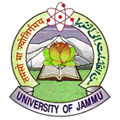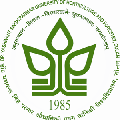Project Overview
Apple is the most important temperate fruit crop grown mainly in Jammu and Kashmir, Himachal Pradesh and Uttaranchal. At global level more than 10,000 cultivars are known today of which only 20 are said to be commercial. India ranks tenth in world apple production; its contribution to the world apple production is only 2% as against 38% by China. To meet the ever-changing demands of the consumer market and the environment, genetic amelioration of the crop is the need of the hour. Despite long years of efforts, the progress in apple improvement has been extremely slow mainly due to constraints inherent to tree breeding, such as, long breeding cycles, lack of suitable resources (genetic markers, linkage maps, efficient selection strategies), and also a poor knowledge-base about the genetic/phenotypic make-up of the apple germplasm available in India. To overcome these problems, in recent years conscious efforts are underway globally to integrate the great potential of newer molecular markers based technology (ies), which can provide impetus, dependability and directionality to the efforts on genetic improvement of apple. The present program, the ‘Network project on apple_genomics’ is one such effort initiated in India with financial support from Department of Biotechnology (DBT), New Delhi in 2010-2011. The network has five institutions, four from the three apple growing states of the country University of Jammu (JU) and (University of Kashmir (KU) from Jammu & Kashmir, Dr. Yashwant Singh Parmar University of Horticulture and Forestry (YSPUH&F) from Himachal Pradesh, Govind Ballabh Pant Institute of Himalayan Environment & Development (GBPIHED) from Uttarakhand and CSIR-Centre for Cellular and Molecular Biology, Hyderabad for the genomics component.
The project aims to: 1) identify, collect, conserve and characterize (for molecular and phenotypic variability) the elite apple germplasm available in all the three apple growing States of India including Kashmir Valley; and more importantly, in long-term 2) to develop a mapping population resource for undertaking the detailed genetic linkage mapping and QTL studies to lay down the foundation for future possibilities of MAS-based accelerated breeding in apple. It is also envisaged that, if feasible, in long-term/phase-II, the developed mapping population will be clonally replicated/evaluated in different agro-climatic conditions of the apple producing states to generate desirable data for making it possible to dissect out the “genotype x environment” interactions/eQTLs that may underlie the agronomic performance” of the important traits of apple.
Since the start of the project significant progress has been made. We have undertaken multiple surveys to identify and collect the apple germplasm, undertaken crossing work to develop suitable mapping population(s) for linkage/QL analysis, and started DNA analysis for germplasm characterization as well as, mapping work. Some of the major achievements are as follow:
- Development of a detailed ‘Performa for Passport data’ of the germplasm to be collected;
- Identification/collection of ~350 elite varieties/genotypes/plus trees of apple from J&K, HP, Uttarakhand through multiple surveys
- Identification of parents (Maharaji and Red delicious); and successful controlled crossing of parents at two locations in Kashmir to develop mapping population(s)
- Harvest of good numbers of putative hybrid fruits/seeds from the crossed plants;
- Raising of the nurseries of mapping progenies at YAPUHF, Solan and KU, Srinagar.
- Standardization of methods for DNA isolation/typing using SSR markers;
- Identification/standardization of a large number of microsatellite markers suitable for germplasm characterization
- Identification of >100 polymorphic microsatellite markers in parental survey, suitable for mapping analysis
- Development/validation of a large number of new apple specific microsatellite markers utilizing the published draft apple genome resource.
- Efforts initiated/underway to prepare land/plots at YSPUHF Solan, GBPIHED Almora, and Botany Department, Kashmir University Srinagar and at Baderwah (regional station of Jammu University), for establishing the apple germplasm repositories.
- Grafting of a number of the identified apple genotypes in the above germplasm repositories.
- DNA typing of ca. 160 identified apple genotypes is completed using .60 SSR markers, and the preliminary allelic diversity analysis suggests region specific variability in the apple germplasm available in India.
- Similarly, the preliminary analysis of the DNA typing data of a number of randomly chosen putative hybrid apple seedlings (being established to develop the mapping population) reveal them to be true segregating hybrids and thus suitable for mapping/linkage analysis.
- Efforts are also made towards establishing the mapping population in a proper mapping orchard (to facilitate future phenotypic/QTL analysis); to this end, required land was approved by the Jammu University at its regional research station Bhaderwah, which is being prepared for establishing the population in next year. A similar request for land resource in Srinagar has also been made to the Kashmir University, which is being favourably considered.








